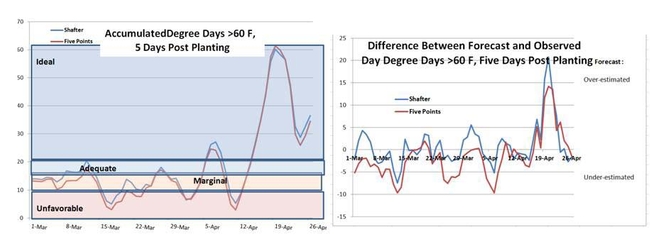- Author: Ashley Van Vliet
- Author: Kathleen Reyes
- Author: Vonny M. Barlow
Entomologist, Dr. Vonny Barlow of the University Cooperative Extension is in the process of continuing his research with Euschistus servus, or Brown Stink Bug (BSB),in cotton. Results from Barlows' studies have contributed to more effective management of BSB in Southern California.
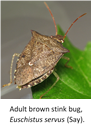
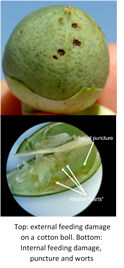
In the eastern states, primarily Georgia, boll rot and cotton staining created by the BSB has become a substantial issue. Initially there was fear that BSB and associated boll rot could cause significant cotton losses in California which prompted many to make chemical applications. In fact, these chemical applications exceeded the regular 3-4 insecticide applications every season, sometimes substantially.
Dr. Barlow is currently in the second year of his experiment which he began over 1 month earlier than in 2015. Three commercial cotton fields were selected to establish experimental plots. Among the three fields, sixteen sampling 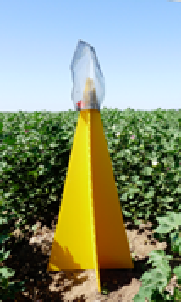
At each sampling locations three data points are gathered. The first data sampling consisted of recording the number of BSB taken from each pheromone trap every seven days. Next, sweep samples consisting of 20 sweeps per trap location are collected and sorted in the laboratory for total numbers of BSB. Finally, stink bug damage to cotton bolls is assessed with 10 cotton bolls per each trap location selected and taken to the lab were they are “cracked”, and processed for; external and internal feeding punctures, stained cotton lint and presence of boll rot. By the end of the season we will have hand processed over 7,000 cotton bolls for this project.
The results of the experiment during the first year demonstrated that there is no significant aggregation of BSB along cotton field perimeters, contradicting what was previously predicted. Pheromone traps yielded greater stink bug numbers than sweep sampling over the same time period. However, the use of pheromone trapping is intensively laborious. It was also demonstrated that the use of 20% internal boll “warts” was not a useful indicator for “triggering” a chemical applications since it was shown that there is no relationship between presence of internal boll warts and cotton boll rot. It appears that even though boll warts when present, are not a “pathway” for bacteria that causes boll rot in Southern California. This may be due to the sometimes harsh environment of California's southern desert which may make the cotton plant leaf surface inhospitable to bacteria. Altogether these findings suggest that insecticide applications for the BSB in Southern California does not need to take place, saving growers from costly applications every season.
- Author: Peter B Goodell

Easy links:
- Plant Management Network - Focus on Cotton Webinars
- CA Cotton Growers and Ginners Association - Slides for viewing from Whitefly-Aphid Workshops
- UC IPM - Pest Management Guidelines for Cotton
Producing the highest quality cotton lint is paramount for cotton growers, PCAs, ginners and merchants. Honeydew produced by sweetpotato whitefly, Biotype B (Bemisia tabaci) and cotton aphid (Aphis gossypii) can settle on open bolls and create sticky cotton. The contamination of cotton lint with sugary honeydew creates major problems with the spinning mills 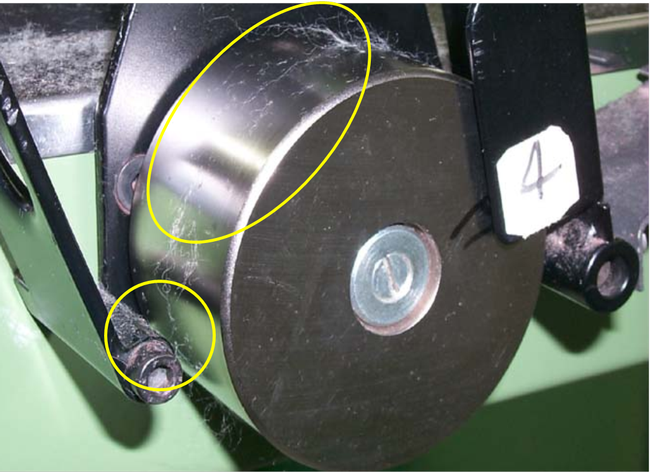
UC IPM and California Cotton and Ginners Associations (CCGGA) recently hosted three workshops to remind the cotton community of the importance of managing these pests to prevent the development of sticky cotton.
The slides presented by IPM Advisor Pete Goodell and UC Davis Extension Entomologist Larry Godfrey are available through CCGGA link by clicking here.
In addition, a series of webinars on the subject has been produced by Cotton Incorporated and Plant Management Network. It is available through my website.
Detailed information on aphid and whitefly management can always be found at UC IPM Pest Management Guides.
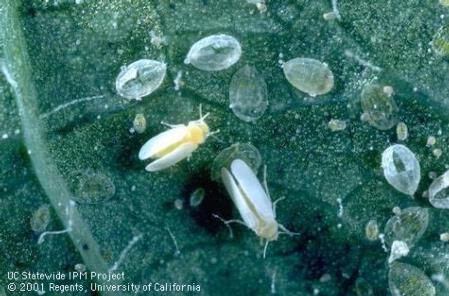

- Author: Peter B Goodell
- Monitoring Lygus in cotton
- Stripping alfalfa hay
- Movement of Lygus in the Landscape
- Natural enemies in cotton
With growing conditions continuing to look favorable for cotton growth and development, fruiting is beginning or well underway in some locations. Fruiting is being noticed in Firebaugh area at 6th main stem node, which is line with early season temperatures we have experienced and good planting dates.
Setting the early fruit sets the plant up for the rest of the season. With a shortage of the irrigation deliveries this year, the season must be as compact as possible. Protecting early fruit is critical in these water short conditions.
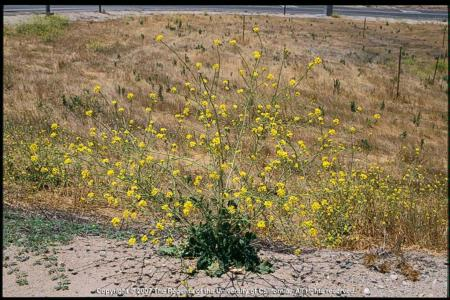
Lygus will be a localized problem. Movement will occur from neighboring sources, most likely other cultivated crops. Key sources for Lygus include safflower, forage alfalfa and seed alfalfa. Within safflower and alfalfa forage, the Lygus population can be managed to prevent mass movement into surrounding cotton fields. Lygus is closely managed in seed alfalfa can still acts as a major source.
Safflower is currently being treated for Lygus to prevent the first generation from 
Alfalfa forage is the most common crop which Lygus prefers. It is a unique crop in our cotton landscape because it is harvested frequently for its vegetative biomass, not its reproductive parts, e.g. fruit, lint, seed. Providing even a limited habitat during cutting can have a substantial effect on mitigating Lygus movement into cotton. During the June and July cuttings, if uncut strips of alfalfa are left in the field, Lygus will move to them and stay until the next irrigation cycle, when they return to the larger alfalfa field.
Limiting the movement of Lygus into cotton not only protects the fruit during this critical early stage but can reduce the need for insecticide applications. This allows additional natural enemies to build and helps reduce pressure for the development of insecticide resistance.
Early intervention through the cultural control of Lygus source management will help set the cotton up for high fruit retention, shorter season and fewer secondary insect and mite problems, as well as reduce costs in early insecticide treatments.
- Author: Peter B Goodell
Useful resources:
On-line training for Year Round IPM Programs
Cotton Pest Management Guidelines
The UC Statewide IPM Program has announced the availability of an on-line tutorial to aid in the use of Year Round IPM Programs.

The on-line training series provides seven video chapters as a "guided tour" of the benefits and uses of the Year-Round IPM Program in field, orchard, and vineyard crops. All the videos except the introduction contain short interactive quizzes.
The seven chapters include:
- Introduction
- Prevention
- Pest identification
- Monitoring
- Management decisions
- Management methods
- Environmental concerns and summary
The on-line training can be reached by clicking here
- Author: Peter B Goodell
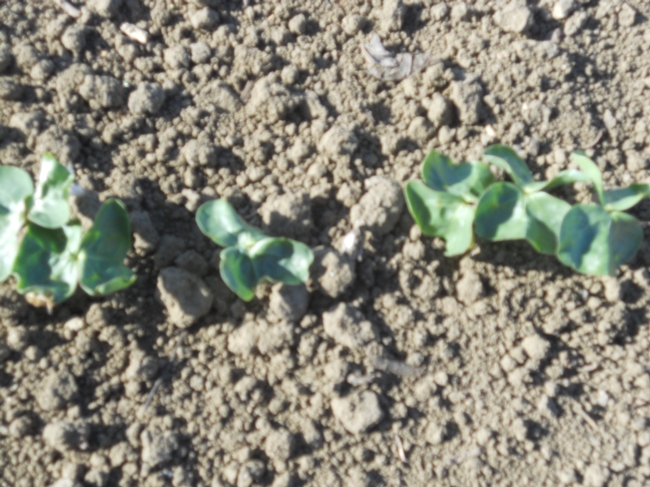
Cotton planting is well underway in the past 3 weeks now that the weather turned warm. While the initial planting was cool and intermittently wet, temperatures since April 16th in the San Joaquin Valley have been excellent for planting cotton. Looking at temperature conditions from March 1 to April 26, 2012 according to accumulated degree-days > 60◦ F five days after planting, Shafter and Five Points had 47% and 37% of those days in the Adequate to Ideal categories (Figure 1). 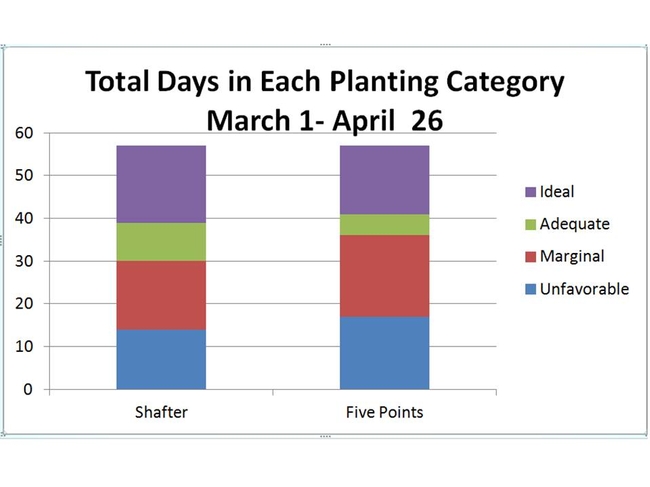
Since April 15th, all dates have had ideal heat accumulation five days after planting (Figure 2A). These data are based on actual temperatures rather than forecasted data. While the forecasted (predicted) degree day accumulation 5 days post planting varied from actual temperature recordings, this year it under-estimated the degree day total (e.g. more conservative) more than it over-estimated (Figure 2B). Some of the the difference can be attributed to inaccuracy in predicting temperatures five days out and the generalized nature of forecast as compared to actual site recording.
The cotton is germinating and emerging from the soil very nicely. In the warm days since April 15th, most cotton should have germinated 10-14 days after planting. Getting a good, vigorous stand is a fundamental step in developing a season long IPM plan. Assessing your stand to determine the number of plants/acre is a useful indicator to address replant concerns and future management decisions. Guidelines for assessing your stand can be found by clicking here on Cotton Year Round IPM site.



